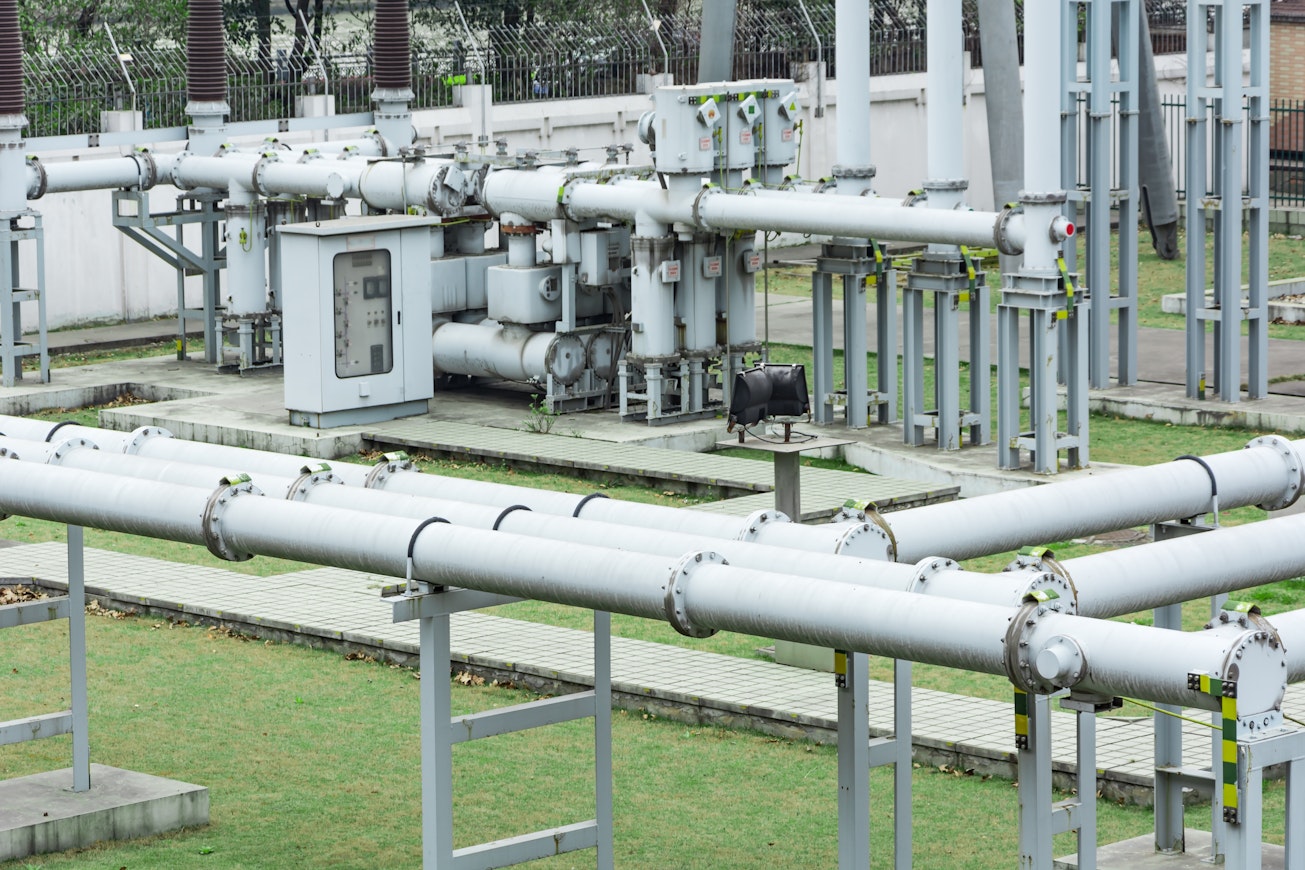- Solar energy blog
- Navigating German renewable processes with RatedPower
Navigating German renewable processes with RatedPower
Germany found itself in a technical recession in 2023 and is likely to rank among the slowest-growing OECD countries in 2024. One culprit is its energy woes. Gas supply disruptions and nuclear plant closures are increasing energy costs, and the renewable shift needs to move faster to mitigate these effects.


Julian Scheer
Customer Success Manager
As a Principal Consultant at RatedPower, Julian Scheer is responsible for directly supporting clients throughout different markets. With his background in Heat and Power Engineering he is passionate about tackling climate related challenges both technically and from a behavioral perspective. For him transforming the Energy System of today is critical to ensure a more sustainable future!

Content
Germany’s bureaucratic challenges in renewable and solar project implementation
Regulations across Germany’s energy sector are stalling clean energy progress. The permitting backlog is significant: projects awaiting approval outnumber those under construction by six to one. This bureaucratic process can deter investment, diminishing the country’s energy security.
Complex regulatory framework
German renewable projects are often caught up in complex regulations that vary depending on the type of technology, energy source, and project size. Aside from multiple authorizations from different oversight agencies, these projects also need to clear environmental assessments and undergo public participation procedures that allow citizens to raise objections during the planning and approval stages.
Looking for more insights, stats, and opinions on the current state of the renewables sector? Download our Renewable Energy & Solar Research Report 2024 that draws from an industry survey and analysis of solar simulations carried out on the RatedPower Platform.
Lengthy regulatory periods
Proposals can sit in limbo for a long time. It currently takes an average of 6 years to get approval for a wind farm. This protracted process involves multiple grid connection studies that often disrupt project timelines and affect financial viability. To illustrate, a project for three wind turbines in 2022 required 36,000 pages of paperwork.
Laws designating clean energy as a national security priority have since sped up approvals and boosted solar deployment. However, while things have improved, Germany has a target of 80% of its electricity stemming from renewables by 2030.
Community resistance
Not-in-my-backyard sentiments also delay green projects. Community protests have hindered a long list of renewable plans, particularly wind farms in rural areas. Case in point: it took several years, plus a war and nationwide blackout warnings, for a small Bavarian town to greenlight a critical high-voltage line that transports wind power from the country’s blustery north to its industrial south, where it’s most needed.
Lack of subsidies
Germany was once among the first countries globally to incentivize green investments. However, these early efforts now pale in comparison to generous clean energy grants in other countries, such as the Inflation Reduction Act in the US. While the German government plans to overhaul its subsidy system, it’s too early to tell if the changes can bring in new investment and reignite momentum.
How Germany is reducing bureaucracy
In response to these inefficiencies, the Federal Network Agency (BNetzA) is aggressively pushing to slash red tape in the electricity and gas grid sectors. The agency outlined key elements that should make it easier for the government to streamline regulations and for network operators to manage changing costs.
Shorter regulatory periods
BNetzA suggests shortening regulatory periods from five to three years. This will allow for more frequent reviews and quicker adjustments based on changes in network operator expenses.
Simplified cost and incentive regulations
In line with shortened regulatory timelines, BNetzA wants to eliminate individual assessments and instead use standard WACC metrics to calculate capital outlays. The agency also recommends reducing the number of costs that need to be adjusted every year.
Focus on the energy transition
Network operators need support as they transition to a new energy system. In response, BNetzA plans to make current tariff regulations, which it describes as a tangle of rules, simpler and easier to follow. This clarity and consistency should help reduce bureaucracy.
Changes in the electricity sector - The agency intends to offer targeted financial incentives to distribution system operators to speed up grid digitization and expansion efforts.
Changes in the gas sector - BNetzA plans to shorten the depreciation period for assets in the gas sector, allowing companies to recover their investments faster (within their commercial lifespan). Network operators will also be allowed to set aside funding to cover the future costs of decommissioning gas network segments that cannot be converted for hydrogen.

Legal and procedural adjustments
In 2023, a new legal framework was passed to accelerate and simplify the placement of solar PV systems alongside federal highways. Given the approximate 50,000 kilometers of federal motorways, up to 48 GW of potential PV capacity could be installed. This is in addition to noise barriers, vertical barriers, parking areas, and rest-area buildings that amount to a possible combined capacity of 6.15 GW.
The Act for the Immediate Enhancement of Conditions for Renewable Energy in Urban Planning Law was enacted (BGBl 2023 I No. 6), stipulating that open-field photovoltaic (PV) systems are privileged projects. These systems can be installed on land located within 200 meters of highways or dual-track railway lines that are part of the national transport network.
Following a European Court of Justice ruling in 2021 that questioned BNetzA’s old ordinances, the agency now develops rules that are more closely aligned with EU laws. Its decisions will now be overseen by the Higher Regional Court of Düsseldorf and the Federal Court of Justice.
Building on these adjustments, the Energy Industry Act will establish a Grand Ruling Chamber within BNetzA. This chamber will make national decisions about grid access and tariffs, concentrating on cost regulation and incentives. It will not handle decisions specific to individual companies.
Focus on digitalization and standardization
BNetzA will soon standardize digitalized planning and approval procedures to accelerate processes and reduce gridlocks across the board.

How RatedPower can assist
If you are a solar plant designer, you need to optimize your processes to keep administrative barriers from delaying your projects.
RatedPower equips you to stay ahead. Our platform streamlines the entire solar project lifecycle, from initial design to financial analysis. It automates key tasks to help you deliver projects faster and make changes more efficiently.
Easily download your interconnection process documentation
RatedPower is one of the few platforms that can automatically generate engineering documentation for interconnection facilities to save you valuable time. You can design overhead transmission or distribution lines with just a few clicks.
The system offers both automatic and manual design options. Input a few parameters; you’ll have a detailed single-line diagram and comprehensive report in minutes. Our calculations ensure compliance with IEC or IEEE standards.
Get project capacity and energy yield estimates while designing and quoting projects with accurate BoM, CAPEX, and LCOE
Conduct in-depth simulations to assess project feasibility, optimize layouts, and generate over 300 pages of essential documentation.
RatedPower makes it easy to optimize your design and submit winning bids for projects over 1 MW.
Get precise financial projections to accurately estimate your project’s cost, revenue, and profitability. Our platform considers installation costs, incentives, tax credits, energy production, revenue projections, and other relevant factors.
Customizable financial modeling
RatedPower generates detailed financial forecasts and conducts cost-benefit analyses, factoring in installation costs, incentives, tax credits, energy production estimates, and revenue projections. This capability lets you quote projects accurately.
No matter the regulatory environment, RatedPower can help you quickly prepare and update your documentation to prevent delays. Try it today.
Latest stories
Related posts
Market analysis
Power where it’s needed: Solving LatAm’s grid instability with distributed solar and storage
Find out how a bottom-up approach is solving LatAm’s grid instability, with community-led solar and storage projects giving people control over their energy.
Updated 29 DEC, 25

Market analysis
Powering through the peak: Why solar + storage is gaining momentum in MENAT
Discover how MENAT is building a functioning solar economy and why rising peak demand during extreme heat is squeezing its energy architecture.
Updated 11 DEC, 25


Market analysis
The rise of utility-scale PV + storage plants in Italy
Discover how Italy’s latest policies and auctions are driving utility-scale solar and battery storage projects to meet ambitious 2030 targets.
Updated 4 DEC, 25

- RatedPower
- Solar energy blog
- Navigating German renewable processes with RatedPower
 Watch a demo
Watch a demo Ask our AI Product Expert
Ask our AI Product Expert
